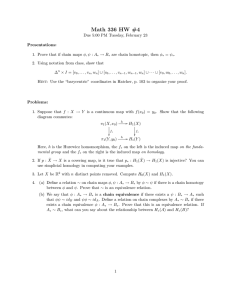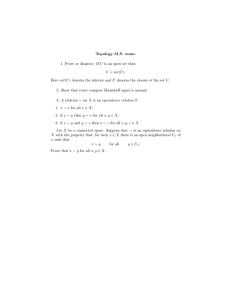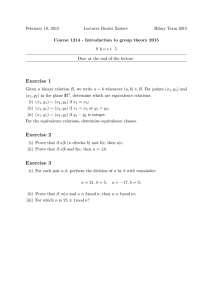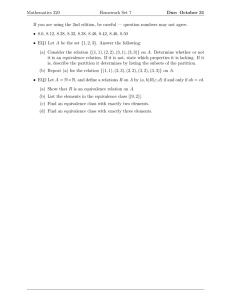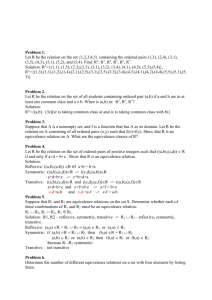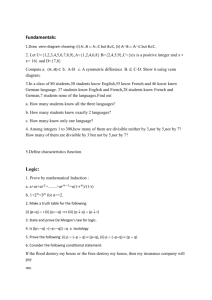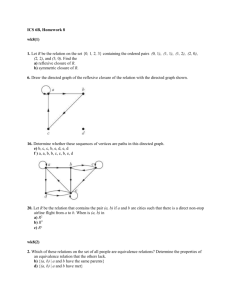Mid-sem - Indian Institute of Technology Kharagpur
advertisement
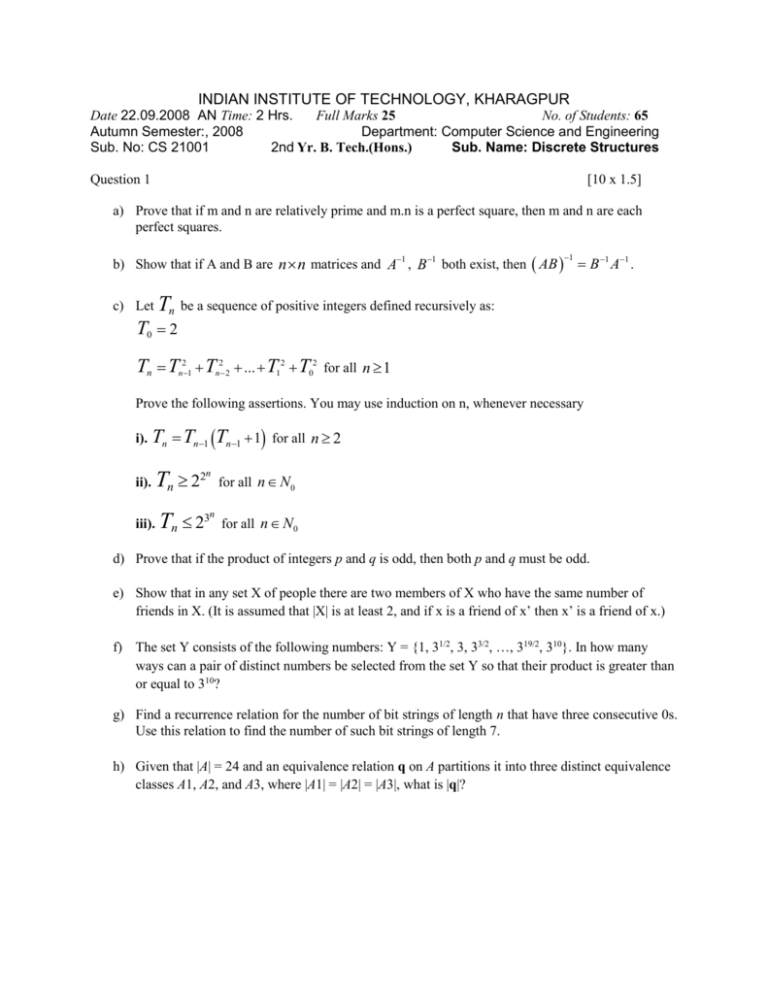
INDIAN INSTITUTE OF TECHNOLOGY, KHARAGPUR
Date 22.09.2008 AN Time: 2 Hrs.
Full Marks 25
No. of Students: 65
Autumn Semester:, 2008
Department: Computer Science and Engineering
Sub. No: CS 21001
2nd Yr. B. Tech.(Hons.)
Sub. Name: Discrete Structures
Question 1
[10 x 1.5]
a) Prove that if m and n are relatively prime and m.n is a perfect square, then m and n are each
perfect squares.
b) Show that if A and B are n n matrices and A1 , B 1 both exist, then AB
c) Let
1
B 1 A1 .
Tn be a sequence of positive integers defined recursively as:
T0 2
Tn Tn21 Tn22 ... T12 T02
for all n 1
Prove the following assertions. You may use induction on n, whenever necessary
i).
Tn Tn1 Tn1 1
ii).
Tn 22n
iii).
Tn 23n for all n N
for all n 2
for all n N0
0
d) Prove that if the product of integers p and q is odd, then both p and q must be odd.
e) Show that in any set X of people there are two members of X who have the same number of
friends in X. (It is assumed that |X| is at least 2, and if x is a friend of x’ then x’ is a friend of x.)
f) The set Y consists of the following numbers: Y = {1, 31/2, 3, 33/2, …, 319/2, 310}. In how many
ways can a pair of distinct numbers be selected from the set Y so that their product is greater than
or equal to 310?
g) Find a recurrence relation for the number of bit strings of length n that have three consecutive 0s.
Use this relation to find the number of such bit strings of length 7.
h) Given that |A| = 24 and an equivalence relation q on A partitions it into three distinct equivalence
classes A1, A2, and A3, where |A1| = |A2| = |A3|, what is |q|?
Question II
[2 + 2 + 1 +1]
a) Let A = {1,2,3,4,5}, R and S are equivalence relations, R = {(1,1), (1,2), (2,1), (2,2), (3,3), (3,4),
(4,3), (4,4), (5,5)}, and S = {(1,1),(2,2),(3,3),(4,4),(4,5),(5,4),(5,5)}. Find the smallest equivalence
relation containing R and S and compute the partition of A it produces.
b)
(a) The figure defines two relations on the set {a,b,c,d}. Find the list and matrix representations
of those relations.
(b) A relation on the set {a,b,c,d} is defined by the following list: {(a,c), (c,c), (a,a), (b,b), (c,a),
(d,b), (d,a)}. Draw its directed graph representation.
c) What is wrong with the following “proof” that every symmetric and transitive relation is
reflexive? If (a,b) R then (b,a) R by symmetry. By transitivity (a,a) R. Therefore R is
reflexive.
d) Backtrack to find an explicit formula for the sequence defined by the recurrence relation
bn = 2.bn-1 = 1 with initial condition b1 = 7.
Question III
[2 + 2]
Prove
a) Let R be a relation on a set A. Then R∞ is the transitive closure of R.
b) Let R be an equivalence relation on a set A and let a € A and b € A. Then
a R b if and only if R(a) = R(b) .
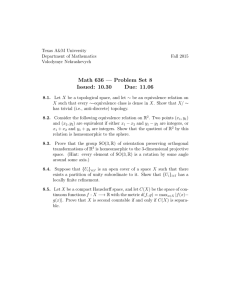
![MA1124 Assignment3 [due Monday 2 February, 2015]](http://s2.studylib.net/store/data/010730345_1-77978f6f6a108f3caa941354ea8099bb-300x300.png)
